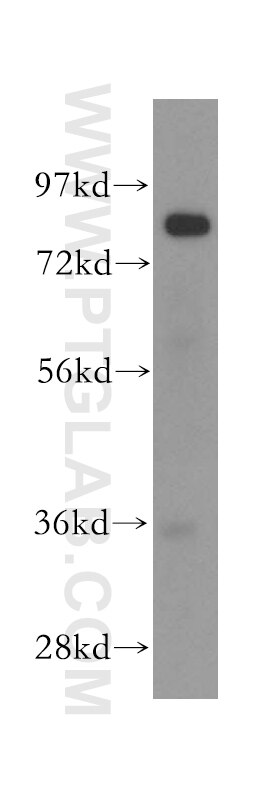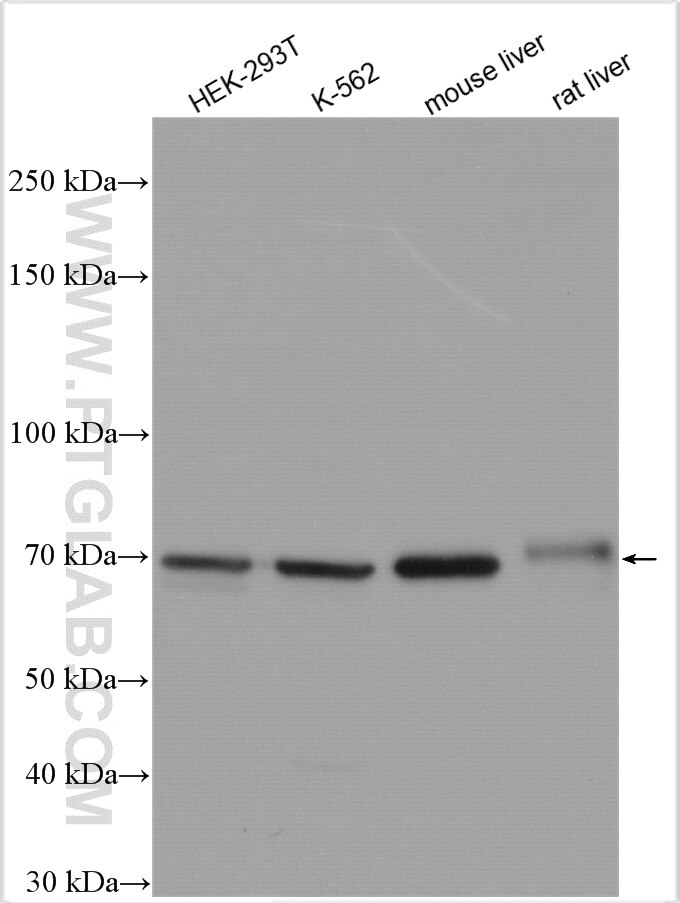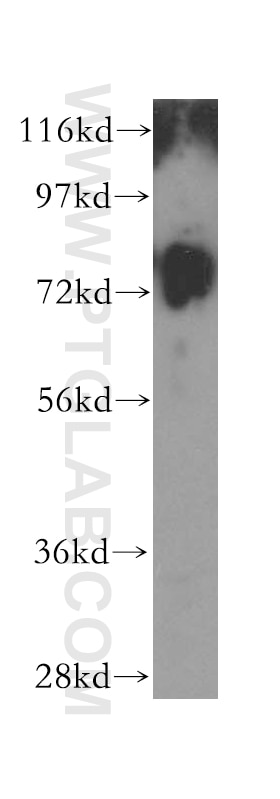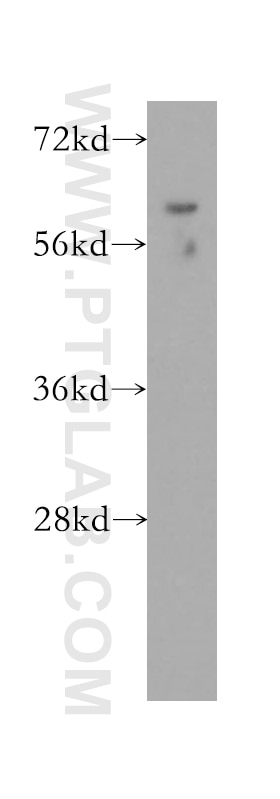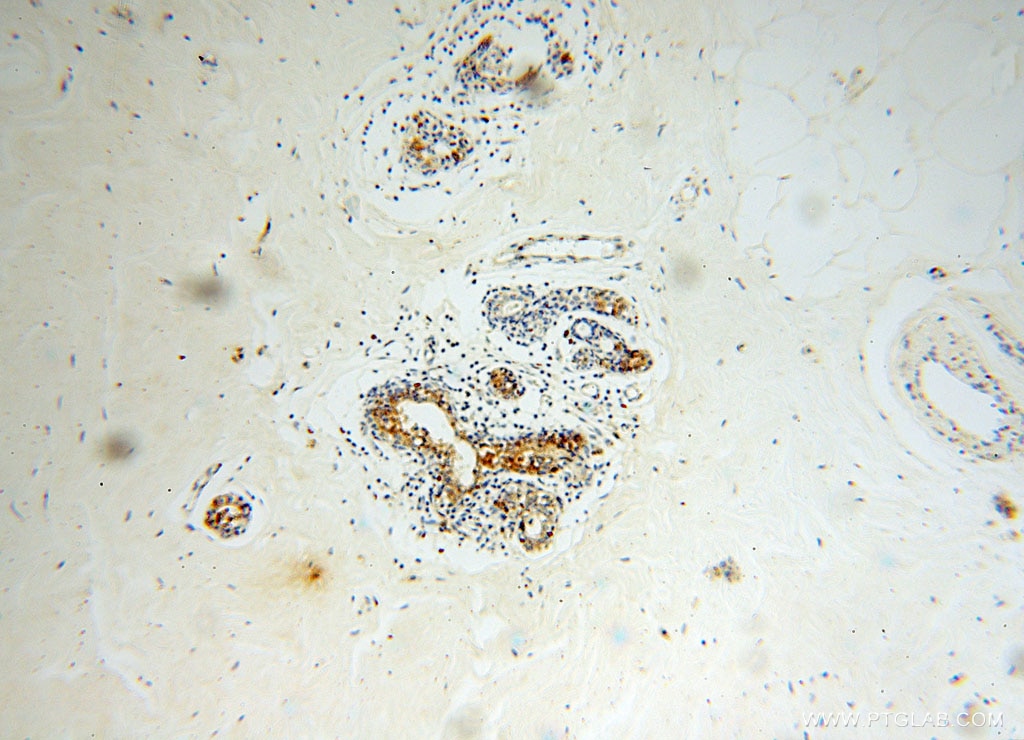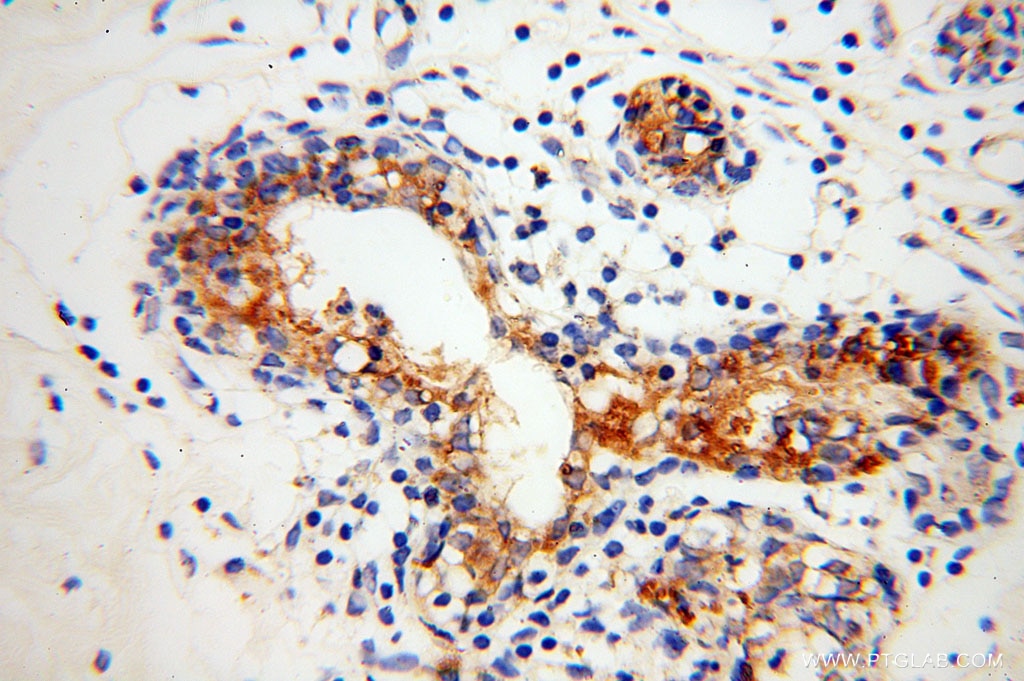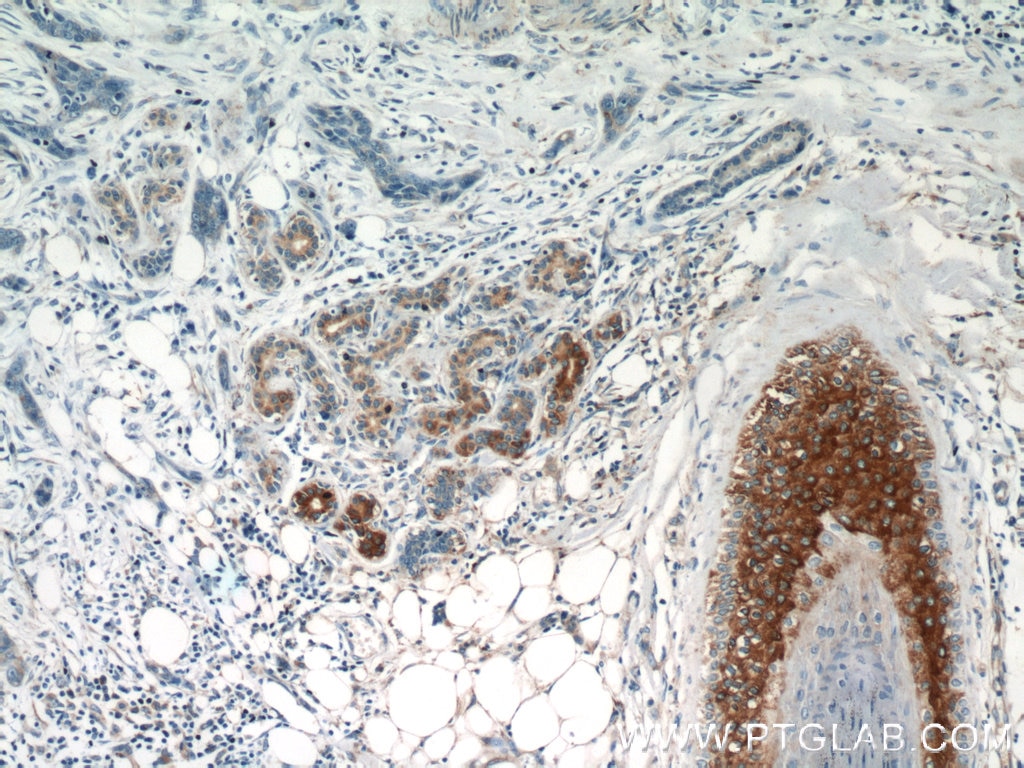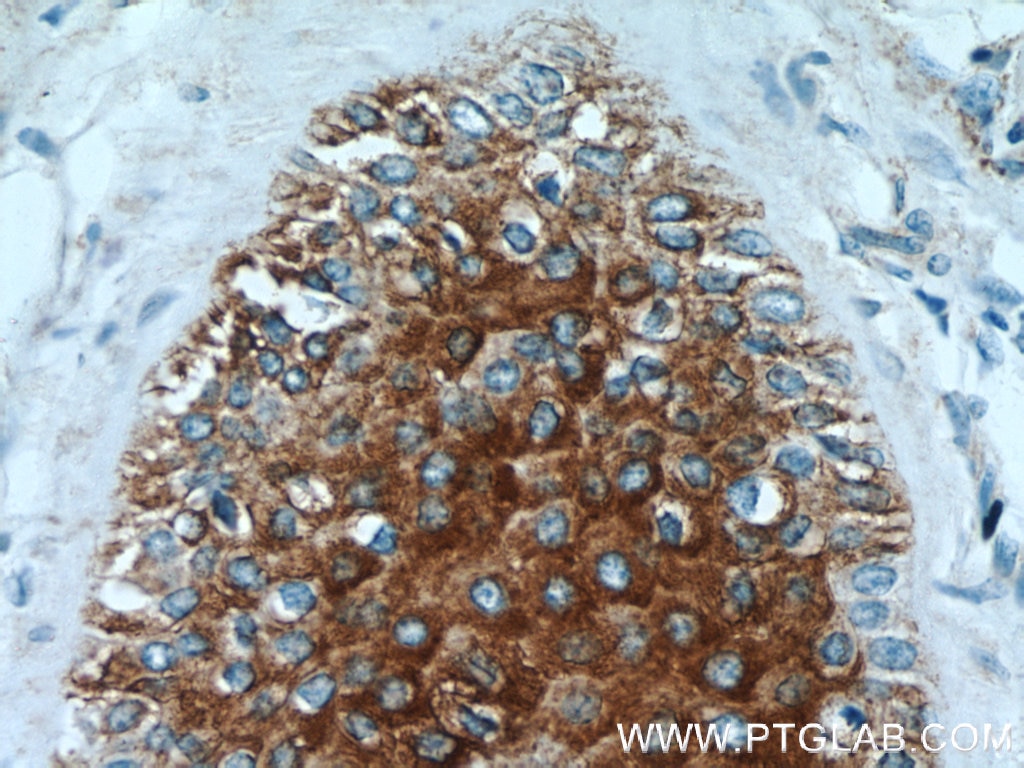- Phare
- Validé par KD/KO
Anticorps Polyclonal de lapin anti-GUSB
GUSB Polyclonal Antibody for WB, IHC, ELISA
Hôte / Isotype
Lapin / IgG
Réactivité testée
Humain, rat, souris
Applications
WB, IHC, ELISA
Conjugaison
Non conjugué
N° de cat : 16332-1-AP
Synonymes
Galerie de données de validation
Applications testées
| Résultats positifs en WB | cellules HEK-293T, cellules HL-60, cellules K-562, tissu cardiaque de souris, tissu hépatique de rat, tissu hépatique de souris |
| Résultats positifs en IHC | tissu de cancer du côlon humain, tissu de cancer de la peau humain il est suggéré de démasquer l'antigène avec un tampon de TE buffer pH 9.0; (*) À défaut, 'le démasquage de l'antigène peut être 'effectué avec un tampon citrate pH 6,0. |
Dilution recommandée
| Application | Dilution |
|---|---|
| Western Blot (WB) | WB : 1:500-1:2000 |
| Immunohistochimie (IHC) | IHC : 1:20-1:200 |
| It is recommended that this reagent should be titrated in each testing system to obtain optimal results. | |
| Sample-dependent, check data in validation data gallery | |
Applications publiées
| KD/KO | See 2 publications below |
| WB | See 5 publications below |
| IHC | See 1 publications below |
Informations sur le produit
16332-1-AP cible GUSB dans les applications de WB, IHC, ELISA et montre une réactivité avec des échantillons Humain, rat, souris
| Réactivité | Humain, rat, souris |
| Réactivité citée | Humain, souris |
| Hôte / Isotype | Lapin / IgG |
| Clonalité | Polyclonal |
| Type | Anticorps |
| Immunogène | GUSB Protéine recombinante Ag9453 |
| Nom complet | glucuronidase, beta |
| Masse moléculaire calculée | 651 aa, 75 kDa |
| Poids moléculaire observé | 78 kDa |
| Numéro d’acquisition GenBank | BC014142 |
| Symbole du gène | GUSB |
| Identification du gène (NCBI) | 2990 |
| Conjugaison | Non conjugué |
| Forme | Liquide |
| Méthode de purification | Purification par affinité contre l'antigène |
| Tampon de stockage | PBS avec azoture de sodium à 0,02 % et glycérol à 50 % pH 7,3 |
| Conditions de stockage | Stocker à -20°C. Stable pendant un an après l'expédition. L'aliquotage n'est pas nécessaire pour le stockage à -20oC Les 20ul contiennent 0,1% de BSA. |
Informations générales
The GUSB gene encodes beta-glucuronidase, a lysosomal hydrolase involved in the stepwise degradation of glucuronic acid-containing glycosaminoglycans. It is a tetrameric glycoprotein composed of identical subunits. GUSB plays an important role in the degradation of dermatan and keratan sulfates. GUSB has two isoforms with the molecular mass of 75 kDa and 69 kDa, and it always can be detected as 78 kDa, 60 kDa and 18 kDa. The 60 kDa and 18 kDa polypeptides are derived by nicking 78-kDa GUSB subunit at Val159-Gly160 (PMID: 1311180, 9268591).
Protocole
| Product Specific Protocols | |
|---|---|
| WB protocol for GUSB antibody 16332-1-AP | Download protocol |
| IHC protocol for GUSB antibody 16332-1-AP | Download protocol |
| Standard Protocols | |
|---|---|
| Click here to view our Standard Protocols |
Publications
| Species | Application | Title |
|---|---|---|
Science The adaptive immune system is a major driver of selection for tumor suppressor gene inactivation.
| ||
J Invest Dermatol Distinct roles for Dectin-1 and Dectin-2 in skin wound healing and neutrophilic inflammatory responses. | ||
PLoS One Changes in retinal pigment epithelium related to cigarette smoke: possible relevance to smoking as a risk factor for age-related macular degeneration. | ||
PLoS One Mitochondrial dysfunction leads to deconjugation of quercetin glucuronides in inflammatory macrophages. | ||
PLoS One C-Type Lectin Receptor Dectin-2 Binds to an Endogenous Protein β-Glucuronidase on Dendritic Cells.
| ||
Gut Microbes Vancomycin relieves tacrolimus-induced hyperglycemia by eliminating gut bacterial beta-glucuronidase enzyme activity |
